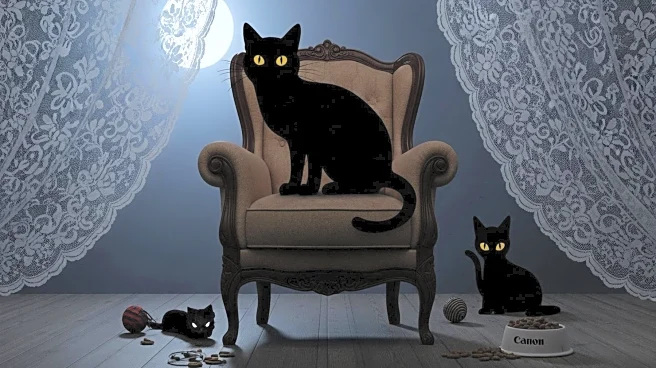What's Happening?
A viral TikTok video captures a woman's humorous attempt to befriend her father's 'evil' cat, Stripe. The video, shared by @chancebeforetherapper, shows the woman trying to interact with the tabby cat, who responds with hisses and clear disinterest. Despite her efforts, the cat only allows her to pet it when her father holds it down, maintaining a wary demeanor. The video has gained significant attention, amassing over 1.7 million views and 234,700 likes. The clip highlights the challenges of earning a cat's trust, which often requires respecting their boundaries and understanding their unique personalities.
Why It's Important?
The viral video underscores the complexities of human-animal interactions, particularly with pets like cats that have distinct personalities and preferences. It serves as a reminder of the importance of respecting animals' boundaries and understanding their behavior. The widespread attention the video has received reflects the public's interest in humorous and relatable pet content, which can foster greater empathy and awareness about animal behavior. Additionally, it highlights the role of social media in amplifying everyday experiences and connecting people through shared humor.
What's Next?
As the video continues to circulate, it may inspire more discussions about pet behavior and the best practices for interacting with animals. The woman has shared updates indicating that Stripe is slowly warming up to her, suggesting that patience and consistency can eventually lead to a positive relationship with pets. This ongoing narrative may encourage viewers to apply similar approaches in their interactions with animals, promoting a more understanding and respectful attitude towards pet care.
Beyond the Headlines
The video also touches on broader themes of social media's impact on personal narratives and the way viral content can shape public perceptions of everyday life. It illustrates how humorous and relatable content can transcend cultural and geographic boundaries, fostering a sense of community among viewers. Furthermore, it highlights the potential for social media platforms to serve as spaces for sharing and discussing pet-related experiences, contributing to a larger conversation about animal welfare and human-animal relationships.











